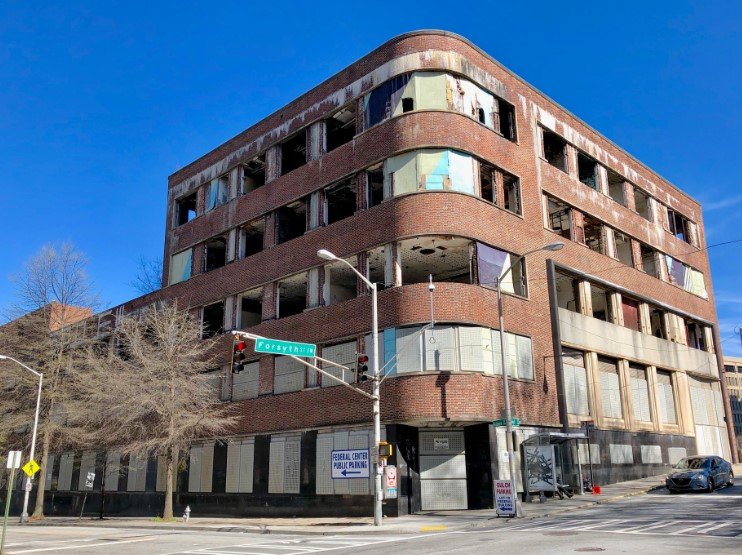Long-vacant landmark to welcome new residents, blending history with community needs in downtown Atlanta
The once-forgotten Atlanta Constitution building, empty for nearly 50 years, is finally stirring back to life. Developer Gorman and Company has kicked off construction to transform the iconic yet dilapidated structure into Folio House — a mixed-income housing project aimed at providing affordable rents for everyday Atlantans like bus drivers and service workers.
From Newspaper Glory to Urban Decay
The building’s story stretches back to 1947, when it proudly housed the Atlanta Constitution newspaper, a pillar of the city’s media landscape. Later, Georgia Power took over briefly before abandoning the art moderne-style building in the early 1970s.
Since then, the structure has stood mostly silent, its windows shattered or overtaken by nature. “There’s a green roof up top,” joked Joel Reed, Gorman’s southeast market president, during the recent groundbreaking. Trees now sprout from cracks in the roof — a symbol of years of neglect.
And if you think that’s wild, wait until you hear about the basement. “There’s a swimming pool in the basement,” Reed added with a laugh. “It wasn’t meant to be a swimming pool, but it’s there.”

Breathing New Life into a Historic Space
The project’s first phase plans to convert the building’s upper floors into 50 residential units, with 46 reserved for lower-income residents. That means workers who keep Atlanta running every day — bus drivers, service industry staff, and others — will finally have more affordable housing options in the city’s core.
The team will also restore the building’s exterior, bringing back some of its historic charm, and clean up the ground floor to make it usable again.
Construction officially starts Monday, with hopes to wrap up before the FIFA World Cup kicks off next summer, when Atlanta expects an influx of visitors and increased demand for housing.
A Win for Public-Private Partnerships
Mayor Andre Dickens was on hand for the groundbreaking and described the long-vacant building as “spooky” before this revival.
“These partnerships allow us to turn vacant and underutilized buildings into thriving community-serving spaces,” Dickens said. “We are turning public assets into engines for equity and economic mobility.”
It’s a fitting description — a once-abandoned landmark becoming a beacon for affordable living and community development.
Nearby, the city has plans to convert other properties, including the 2 Peachtree skyscraper and a lot across from City Hall, into more affordable housing, signaling a larger push to tackle Atlanta’s growing housing needs.
Challenges and Changes Ahead
Before the transformation can fully take shape, remediation and abatement work are essential. The building’s long vacancy has left it with serious issues, from the unexpected basement pool to the green roof of wild trees.
“The building’s been through a lot,” said Reed. “But we’re excited to give it the makeover it deserves.”
This revival isn’t just about bricks and mortar; it’s about restoring community roots and preserving history while addressing modern-day challenges.
A New Chapter for South Downtown
The Folio House project represents more than just a renovation. It’s a step towards reshaping a neglected part of the city into a vibrant, inclusive neighborhood.
Affordable housing remains a critical issue in Atlanta, where rapid growth has pushed many residents to the fringes. Projects like this aim to bring the city’s workforce back into its heart, making daily commutes easier and neighborhoods stronger.
The coming months will be crucial to watch as construction gets underway, with the hope that Folio House will become a model for urban renewal that balances heritage, housing, and community needs.
